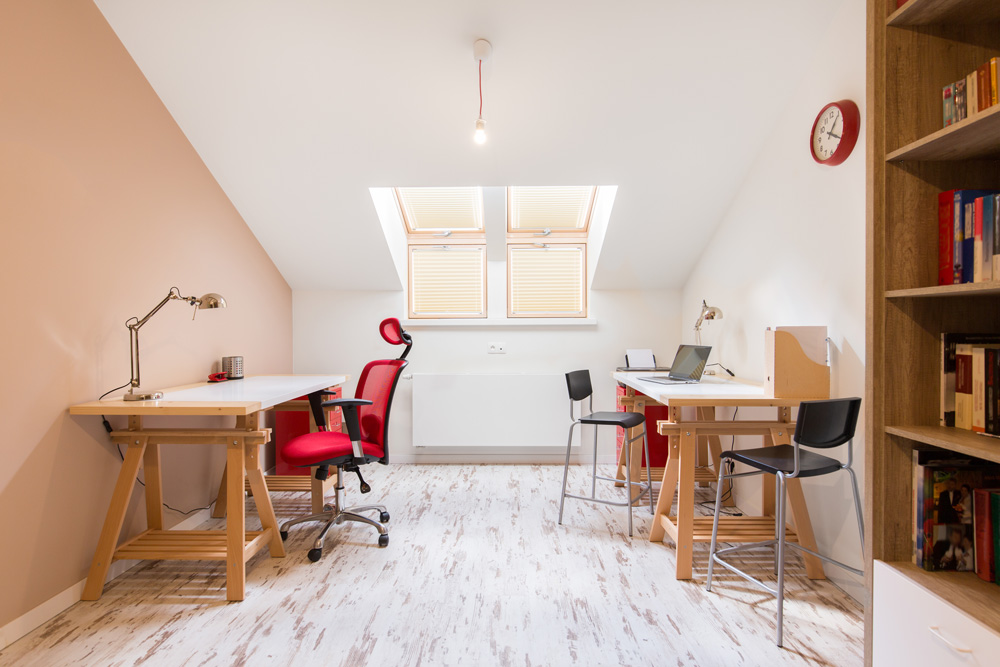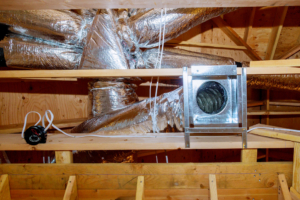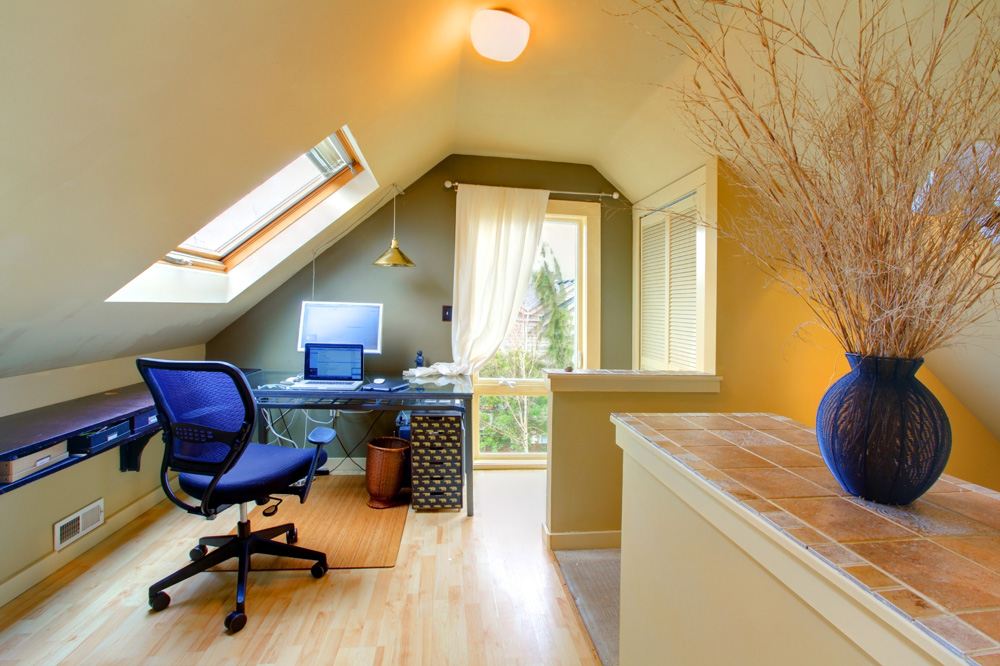How To Fix Uneven Temperatures In Your Attic Home Office
Over the last year, more and more people began investing in home offices. Looking for a quiet and out-of-the-way space in a busy household led many to a traditionally unoccupied room in the home: the attic.

An attic is a great space for a home office!
Attics make fantastic home offices if they’re properly finished. However, before you begin measuring your attic for office furniture, consider an important component of every home office: temperature. Often, even after being finished, attics are not as comfortable as the rest of the home.
No matter the size or age of your home, it’s likely that you’ve dealt with inconsistent temperatures. It’s possible to experience shifts in temperature from floor to floor, room to room, or even from one side of the room to another!
Sometimes, these temperature imbalances may not be dramatic. Other times homeowners may find certain areas of the home to be unlivable in extreme weather conditions. If you’re considering converting your attic into an office, here are a few things to think about.
Insulation

Insulation is vital to maintaining a comfortable temperature.
Many homes are not well-insulated. Whether the insulation has broken down over time or was just poorly installed, insufficient insulation can cause huge temperature fluctuations. Obviously, lack of insulation is a tremendous waste of energy. Your HVAC system works extra hard to make up for the conditioned air escaping through your walls or roof.
In general, correcting this problem will likely help you save significantly on your energy bills, and increase your comfort levels. If you suspect insulation (or lack thereof) to be a problem in your attic, consult a professional. There are many different kinds of insulation, and an installer can help you put the right insulation in the right place.
Drafts
Professionals refer to energy loss from drafts as “infiltration”.
During the winter, warm air rises right through gaps in the top of the house. During the summer, (as cold air falls) hot and humid air gets sucked in from outside. This is why insulation (the pink fluffy stuff) is only part of the solution. Make sure you’re not losing conditioned air through drafty windows, doors, recessed lights, or attic knee walls. If you’re working with a contractor, address air sealing as well as insulating. If you’re trying to DIY, take the time to learn about air sealing materials and techniques.
Ductwork

Ductwork should be tightly sealed, properly insulated, and the right size for the space.
In central heating and air systems, ducts carry conditioned air throughout the house. It’s vital that these ducts are properly sized, and it’s also important that they’re tight. If your ductwork is leaky, it can cause discomfort and high utility bills. If there’s a large leak or loose joint, airflow can be cut off completely from certain rooms.
Leaky ductwork in attics will not only seep conditioned air into the space, but unconditioned air can also be pulled back into the ductwork. This causes added stress to the HVAC system and can bring dust and dirt into the home. If you have ductwork running through attic space, it should be properly insulated and sealed to perform properly.
Furnace
In addition to possibly having the wrong sized ductwork, it’s also possible to have a furnace that is the wrong size for your house. If your furnace is too small, it may not be able to warm your house as effectively as you’d like. If your furnace is too large, it may heat up too quickly. This can make certain rooms uncomfortably warm, but it can also cause rooms further away from the thermostat to be cold. This is referred to as short cycling. It’s inefficient and shortens the life of your system.
If you suspect these problems, an HVAC professional can determine the correct sizing for your home.
Thermostat
Most thermostats are designed to sense the temperature in the room where they’re installed. When that room reaches the right temperature, the thermostat will shut off. If the duct system was well designed, the system should heat and cool relatively evenly. Unfortunately, many duct systems are not well designed, and many HVAC systems are oversized, resulting in uncomfortable homes.
One way to fix this problem is through zoning. Zoning allows you to control temperatures from distinct thermostats on different floors or areas. With a zoned system, you can even control the airflow to individual rooms. This is helpful if you need more heat to a certain area, or if you want to avoid wasting energy in a room you’re not using.

Your dream home attic office is within reach! Contact us today.
It can seem overwhelming, but temperature-controlling your home is entirely possible. Addressing the problems that cause uneven temperatures can save money and keep you comfortable all year long. A trusted professional HVAC contractor like A.N. Roth can help! Contact us today.
